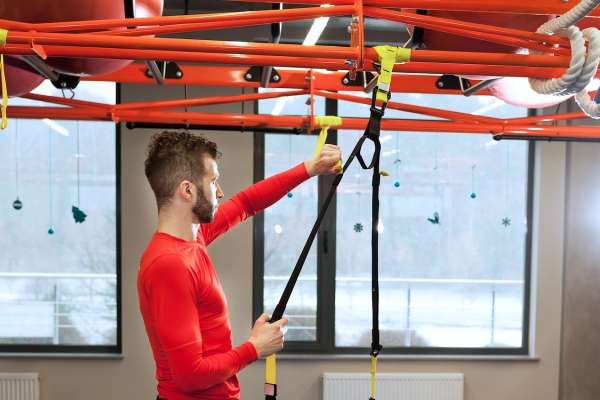100 %

Jul 6,2023
Selecting the right length for a sling ensures safety and efficiency in lifting and rigging operations. This informative blog will explore the factors to consider when determining the best length for a sling. Understanding the impact of sling length on load stability, capacity, and handling can significantly enhance workplace safety and productivity. By delving into the various types of slings and their specific applications, you'll gain valuable insights into selecting the optimal sling length for your lifting needs. Discover the key considerations for choosing the perfect length and unlock the full potential of your lifting operations.
A sling's length is critical in ensuring safe and efficient lifting operations. The proper sling length directly impacts load stability, weight capacity, and handling during lifting and rigging tasks. Choosing the right sling length is vital to prevent accidents, minimize the risk of load shifts or slippage, and ensure optimal load control. By understanding the importance of sling length and its impact on overall lifting performance, operators can make informed decisions to enhance workplace safety and productivity.
Determining the ideal sling length requires careful consideration of several factors. These factors include the type and shape of the load, the lifting method, the attachment points, and any overhead obstructions. It is crucial to assess the lifting environment, considering the clearance needed for safe lifting, maneuverability, and load control. Working closely with experienced riggers or consulting industry standards and guidelines can provide valuable guidance in selecting the optimal sling length for safe and efficient lifting operations.
When selecting the sling length, several key considerations come into play. These include the desired lifting angle, the length required for secure attachment to the load, and the sling length for achieving proper load balance and control. The lifting angle significantly affects the load's weight distribution, determining the force transmitted to each sling leg. Following the recommended lifting angles provided by manufacturers or industry guidelines is crucial to ensure safe and efficient lifting operations.
The sling length directly influences load stability during lifting operations. Insufficient sling length can result in an unstable load, causing it to shift or tip during lifting, posing a significant safety hazard. On the other hand, excessive sling length can reduce load control and increase the risk of swinging or uncontrollable movements. Selecting a sling length that allows for proper load balance, ensuring that the load remains secure and stable throughout the lifting process. Maintaining load stability is critical to prevent accidents and protect workers and the load.
Sling length also affects the weight capacity or the maximum load a sling can safely handle. The longer the sling length, the greater the load capacity due to the increased angle of the sling legs and the resulting reduction in the load applied to each leg. However, it is essential to consider the sling's rated capacity and ensure that the selected sling length does not exceed the manufacturer's guidelines. Exceeding the weight capacity of a sling can lead to sling failure and jeopardize the safety of the lifting operation.
The right sling length significantly impacts the handling and maneuverability of the load during lifting operations. A sling that is too long can make load control and precise positioning challenging, resulting in potential damage to the load or surrounding structures. Conversely, a sling that is too short may restrict maneuverability and limit the operator's ability to properly control and position the load. Choosing the optimal sling length allows for smooth and precise handling, ensuring efficient load placement and minimizing the risk of accidents or damage.
Several factors influence the selection of the appropriate sling length. These factors include the lifting method (e.g., vertical, choker, or basket hitch), the shape and weight distribution of the load, the available headroom, and any spatial limitations in the lifting environment. It is essential to assess these factors to determine the ideal sling length that ensures safe lifting, load stability, and efficient handling. Adhering to industry standards, consulting rigging professionals, or utilizing sling length calculation tools can assist in making informed decisions.
To illustrate the importance of selecting the best sling length, let's consider some practical examples. When lifting a long and narrow load, using a sling length that spans the entire length ensures proper load balance and stability. For a load with an irregular shape, utilizing multiple slings with appropriate lengths and attachment points can help achieve optimal load control. Additionally, selecting a shorter sling length in situations with limited headroom allows for safe lifting while avoiding obstructions.
In conclusion, selecting the best sling length ensures safety and efficiency in lifting operations. Proper sling length directly affects load stability, weight capacity, and handling during lifting and rigging tasks. By considering load stability, weight capacity, handling, and relevant environmental constraints, operators can determine the optimal sling length for their specific lifting needs. Investing time and effort into selecting the right sling length enhances workplace safety, improves load control, and maximizes productivity in lifting operations.